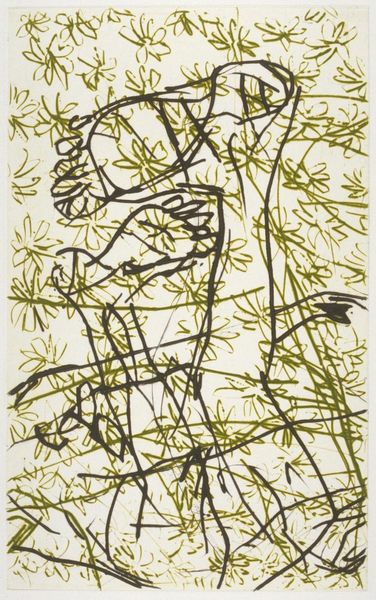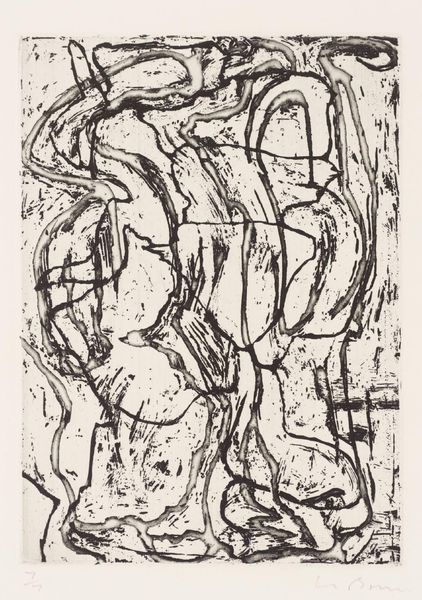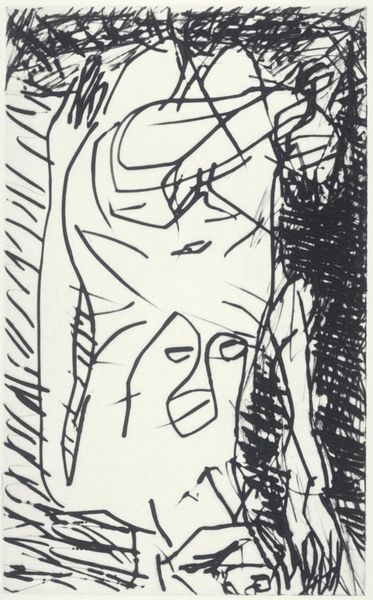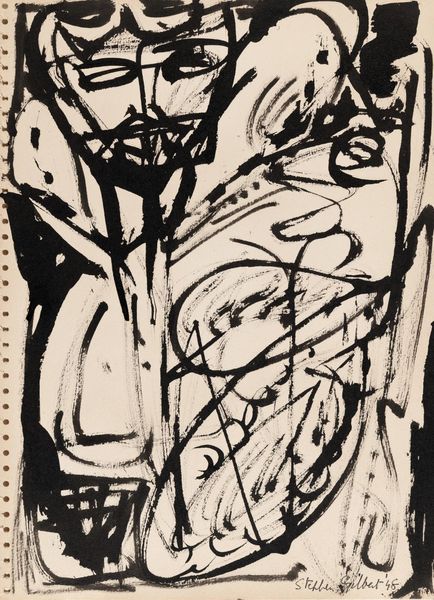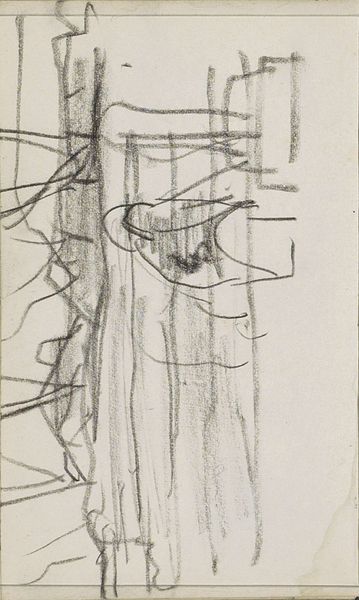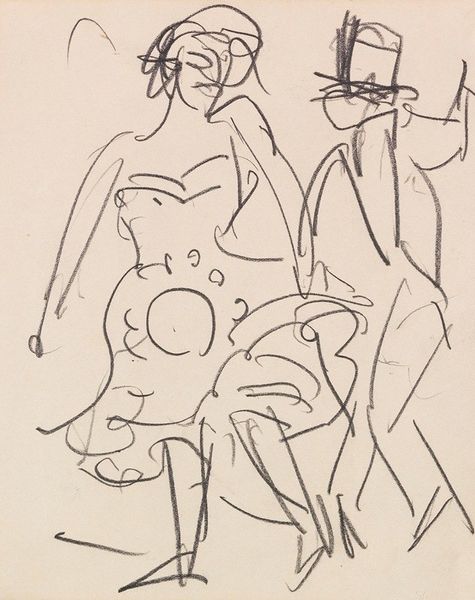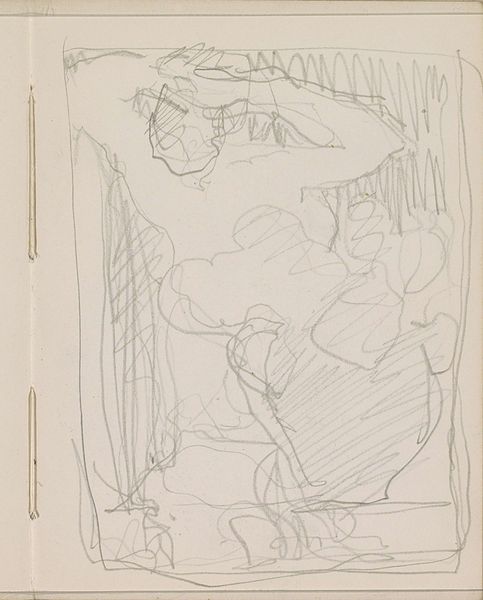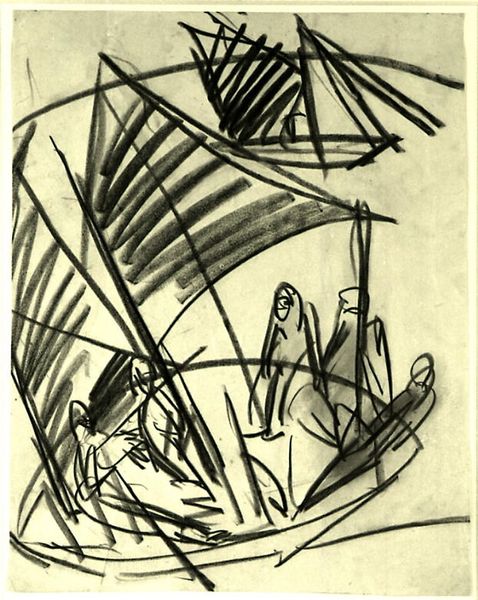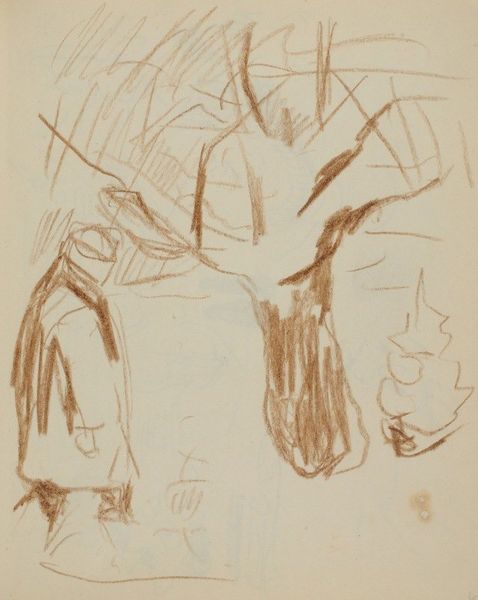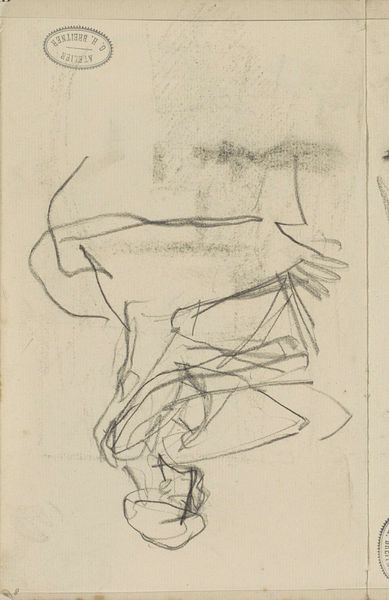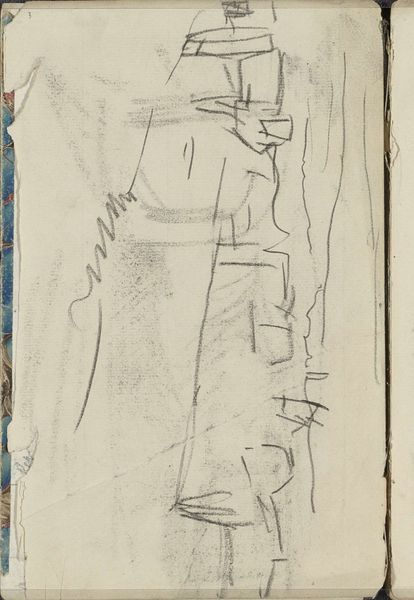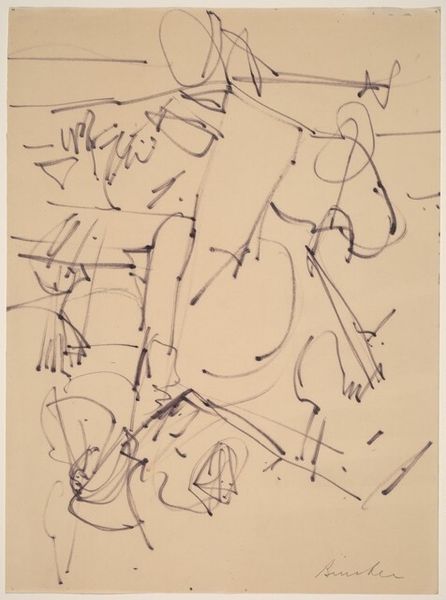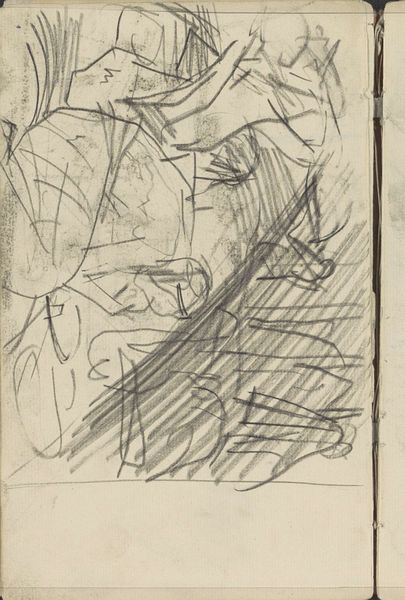![[no title] by Georg Baselitz](/_next/image?url=https%3A%2F%2Fd2w8kbdekdi1gv.cloudfront.net%2FeyJidWNrZXQiOiAiYXJ0ZXJhLWltYWdlcy1idWNrZXQiLCAia2V5IjogImFydHdvcmtzLzNlNjc2YzJhLTdkYTItNDk5ZS1hYWQxLTE4YTg3NWY0OTVmNy8zZTY3NmMyYS03ZGEyLTQ5OWUtYWFkMS0xOGE4NzVmNDk1ZjdfZnVsbC5qcGciLCAiZWRpdHMiOiB7InJlc2l6ZSI6IHsid2lkdGgiOiAxOTIwLCAiaGVpZ2h0IjogMTkyMCwgImZpdCI6ICJpbnNpZGUifX19&w=2048&q=75)
Dimensions: image: 290 x 178 mm mount: 562 x 409 x 4 mm
Copyright: © Georg Baselitz | CC-BY-NC-ND 4.0 DEED, Photo: Tate
Editor: This untitled print is by Georg Baselitz and is held at the Tate. Its scribbled lines make me feel a little anxious, like I can't quite grasp what I'm seeing. What do you make of it? Curator: It's interesting you mention anxiety. Baselitz emerged in post-war Germany, a time of immense social and political tension. The seeming chaos could be seen as a visual representation of a fragmented society grappling with its past. Do you think the lack of clear representation contributes to that unease? Editor: Absolutely. It feels deliberate, like a rejection of traditional, easily digestible imagery. Curator: Exactly. And that rejection, that deliberate "ugliness," became a powerful statement against the dominant cultural norms of the time. It challenged viewers to confront uncomfortable truths rather than offering pretty illusions. Editor: So, it's less about what it literally depicts and more about the statement it makes within its historical context. Thanks, that really clarifies things. Curator: Precisely. Thinking about its place and time opens up the image.
Comments
Join the conversation
Join millions of artists and users on Artera today and experience the ultimate creative platform.
tate 8 months ago
⋮
Baselitz’s vigorous and expressive style, influenced by the drawing and paintings of the mentally ill, often represents the body as a site of anxiety. This series of prints show a female figure crouching and twisted. The body is fragmented: in some works, the head is cropped, while others feature only isolated limbs. The hatched and scored quality adds to the sense of raw spontaneity and even violence. Many of the prints include flowers and vegetation which, with the use of greens and browns, suggest wild nature and fertility. Gallery label, July 2015
